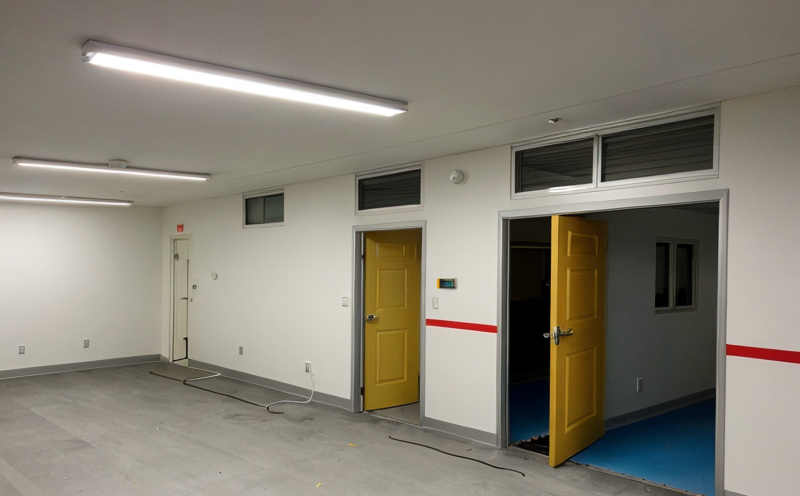EN 60529 IP Rating Testing of Emergency Lighting Enclosures
The European Standard EN 60529 provides a framework for defining and testing the ingress protection ratings (IP codes) of electrical equipment, including emergency lighting enclosures. This standard is crucial in ensuring that these devices are robust enough to withstand environmental conditions while performing their critical functions during power failures.
Emergency lighting systems play a vital role in safeguarding public safety by providing illumination in the event of a power outage or other emergencies. The integrity and reliability of these systems depend heavily on the enclosures housing the luminaires, batteries, and control components. IP rating testing ensures that these enclosures meet stringent requirements for dust and water resistance, which are essential for their proper functioning under adverse conditions.
IP ratings consist of two digits: the first digit indicates protection against solid objects (dust) or intrusion by foreign bodies, while the second digit specifies protection against liquids. For emergency lighting enclosures, a high IP rating ensures that they can operate effectively in environments with significant dust and moisture levels.
The testing process involves subjecting the enclosure to various simulated environmental conditions designed to replicate real-world scenarios. These tests are conducted using international standards such as EN 60529, ensuring compliance with global safety regulations. The test procedures include immersion in water for different durations and at varying temperatures, exposure to high-pressure jets of water, and dust ingress testing.
Proper preparation of the specimen is critical before conducting IP rating tests. This includes cleaning the enclosure thoroughly, applying any necessary sealants or coatings, and ensuring all components are securely fastened in place. The test setup should replicate actual operating conditions as closely as possible to ensure accurate results.
The instrumentation used for these tests includes environmental chambers capable of simulating a wide range of climatic conditions, high-pressure water jets, dust ingress testers, and temperature-controlled environments. The data collected during testing is meticulously recorded and analyzed using advanced software tools to determine the IP rating accurately.
Once the test results are available, they are compiled into comprehensive reports detailing the performance of the enclosure under specified conditions. These reports serve as essential documentation for compliance with regulatory requirements and provide valuable insights into potential improvements for future designs.
Industry Applications
| Application | Description |
|---|---|
| Data Centers | Ensuring the reliability of emergency lighting systems in critical infrastructure facilities. |
| Hospitals and Clinics | Maintaining patient safety during power outages or other emergencies. |
| Offshore Platforms | Providing essential illumination in harsh marine environments. |
| Critical Infrastructure Facilities | Safeguarding operations during power failures or other disruptions. |
| Metro Stations and Subway Systems | Offering reliable lighting in underground facilities. |
| Retail Stores and Shopping Malls | Ensuring customer safety during emergencies, especially after operating hours. |
Customer Impact and Satisfaction
- Enhanced confidence in product reliability and safety.
- Improved compliance with international standards, reducing the risk of non-compliance fines.
- Increased market competitiveness by meeting or exceeding industry benchmarks.
- Simplified regulatory processes through clear documentation of test results.
- Reduced downtime and increased operational efficiency in critical facilities.
Use Cases and Application Examples
- Testing enclosures for new emergency lighting systems before commercial release.
- Conducting periodic re-certification tests to ensure ongoing compliance with regulatory standards.
- Performing post-incident assessments to identify any weaknesses in the design or manufacturing process.
- Incorporating test results into product development cycles for continuous improvement.





